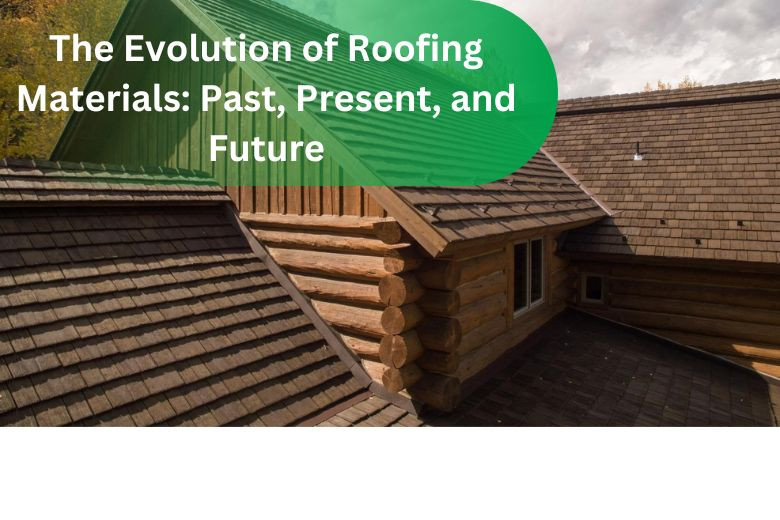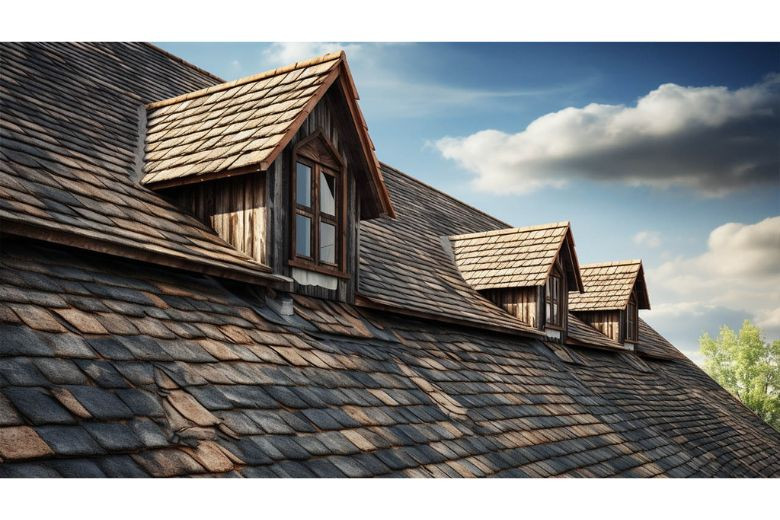The Evolution of Roofing Materials: Past, Present, and Future
Posted on August 26, 2024 by Admin

The development of roofing materials is a wonderful journey through history, from technological development and progress in design to feasibility in sustainability. About this, the evolution of roofing materials has shown it has a drive to further adapt to needs that may change and environmental challenges. Such evolution is best explored by examining the past, the present, and the prospect of roofing materials.
The Past: Traditional Roofing Materials
In the past, it had always been driven by the availability of local resources and durability that mainly governed the evolution of roofing materials. Thatch, clay tiles, and wooden shingles were some of the common roofing materials used by ancient civilizations. Thatch, usually made from straw or reeds, is used in warm climates since it provides insulation. Clay tiles, generally kiln-fired, gained popularity in the Mediterranean region because they were very hard and fire-resistant. Wooden shingles, cut from cedar or oak, covered most of Europe and North America because of the natural appearance and turned out to be a good weathering agent.Afterwards, with the development of roofing technology, in the 19th and early 20th centuries came asphalt shingles and metal roofing. Asphalt shingles, born in the early 1900s, gained such great popularity because they could offer three things: low price, ease of installation, and a wide range of styles. Metal roofing made of galvanized steel or aluminum provides better durability and weather resistance. These were giant steps ahead in the line of roofing materials, facilitating more options for both house owners and builders.
The Present: Modern Roofing Solutions
Today, that has evolved to become focused on energy efficiency, sustainability, and advanced performance in roofing materials. Today's roofing solution was designed as a wide array of materials for diverse needs and preferences.
1. Asphalt Shingles
Still very popular, asphalt shingles have also gained architectural designs and are more weather resistant nowadays. Technological advances have made them longer-lasting and more energy-efficient.
2. Metal Roofing
This segment has experienced huge growth. Modern metal roofs are made with varying styles and coatings that increase the life and reflectivity of the metal. These roofs guarantee the maximum resistance to the elements and drastic reduction in energy costs.
3. Synthetic Roofing Materials
The never-stopping improvement of roofing materials brought about synthetic ones, which tend to imitate traditional materials like slate and wood. To some extent, though, they are done more durably and lowly maintainable. Quite often, synthetic materials are lighter, more resistant to weather, and offer more design possibilities.
4. Green Roofs
Green roofs have become very popular, an indication of interest in sustainability. They support vegetation for insulation, stormwater management, and reduction of urban heat. Green roofs show the enormous strides made toward natural elements being inducted into modern building practices.
5. Cool Roofs
A cool roof reflects more of the sun's rays and absorbs less heat than a traditional roof. This new innovation helps in reducing cooling costs, improving indoor comfort, and mitigating the urban heat island effect.

The Future: Innovations on the Horizon
The future holds much more excitement in the evolution of roofing materials. The future innovations will surely pay much greater attention to sustainability, energy efficiency, and smart technologies.
1. Solar Roofing
This would result in photovoltaic cells being integrated into roofing materials whereby the roofs would generate electricity without any compromise on the look and feel. The major step towards breaking up the monopoly of non-renewable sources of energy is solar roofing.
2. Advanced Materials
In the future, advanced materials with improved durability, flexibility, and environmental performance will be used. Self-healing materials and enhanced insulation performance are some of the innovations that will boost the functionality of roofing systems in the future.
3. Smart Roofs
Next-generation smart roofing technologies will go on to include self-monitoring and controlling sensor devices that track performance. These devices would be capable of providing real-time information on the weather, energy usage, and potential problems for the owner of the house.
Must Read : Innovative Roofing Solutions for Modern Homes
Conclusion
This history of roofing materials mirrors a dynamic interplay between historical practice, modern advancement, and future innovation. From traditional thatched and clay tiles to modern synthetic materials and green roofs, their evolution has always been such that it caters to the ever-modifying needs and environmental challenges. And let's speak of a future perspective here: Some exciting possibilities open up for reshaping functionality, sustainability, and aesthetic appeal in our homes when seen in light of the evolution of roofing materials. These will be the innovations that will secure protection, efficiency, and style for our roofs generations to come.
Faqs
-
1. What are traditional roofing materials used in earlier times?
Traditionally, thatch, clay tiles, and wooden shingles have been the three roofing materials used quite a long time ago. Thatch was used in warm climates, clay tiles in the Mediterranean area, and wooden shingles in Europe and North America.
-
2. How have asphalt shingles evolved over time?
Advances in asphalt shingles include architectural designs and improved weather resistance. Asphalt shingles are stronger, more energy-efficient, and varied in style compared to previous versions.
-
3. What are green roofs and why are they important?
Green roofs are vegetated and covered with a growing medium. They insulate, runoff during storms, cool the urban heat islands, and make the buildings more aesthetically pleasing.
-
4. What are cool roofs and their benefits?
Roofs developed with higher solar reflectance and lower thermal emittance compared to traditional roofing materials are called cool roofs. The benefits include reduced cooling costs, enhanced comfort in the interior space, and a decrease in the urban heat island effect.
-
5. What future innovations are expected in roofing materials?
Roofing materials in future innovations can only be envisioned to include solar roofing with integrated photovoltaic cells, advanced materials for improved durability, and smart roofing technologies equipped with sensors to monitor and manage roof performance.
Recent Post
- Top Plumbing Service Providers in Arizona, USA
- Top 10 Electrician Service Providers in Alabama, USA
- Top 20 Roof Repair Service Providers in Alabama, USA
- The Role of Roof Insulation in Energy Efficiency: Tips and Tricks
- Understanding Roof Damage from Wildlife and How to Prevent It
- How to Choose the Best Roofing Contractor for Emergency Repairs
- Roofing Maintenance for Historic Homes: Preserving Architectural Integrity
- The Importance of Proper Attic Ventilation for Roof Health
- How to Identify and Prevent Roof Mold and Mildew
- The Best Practices for Removing Snow from Your Roof